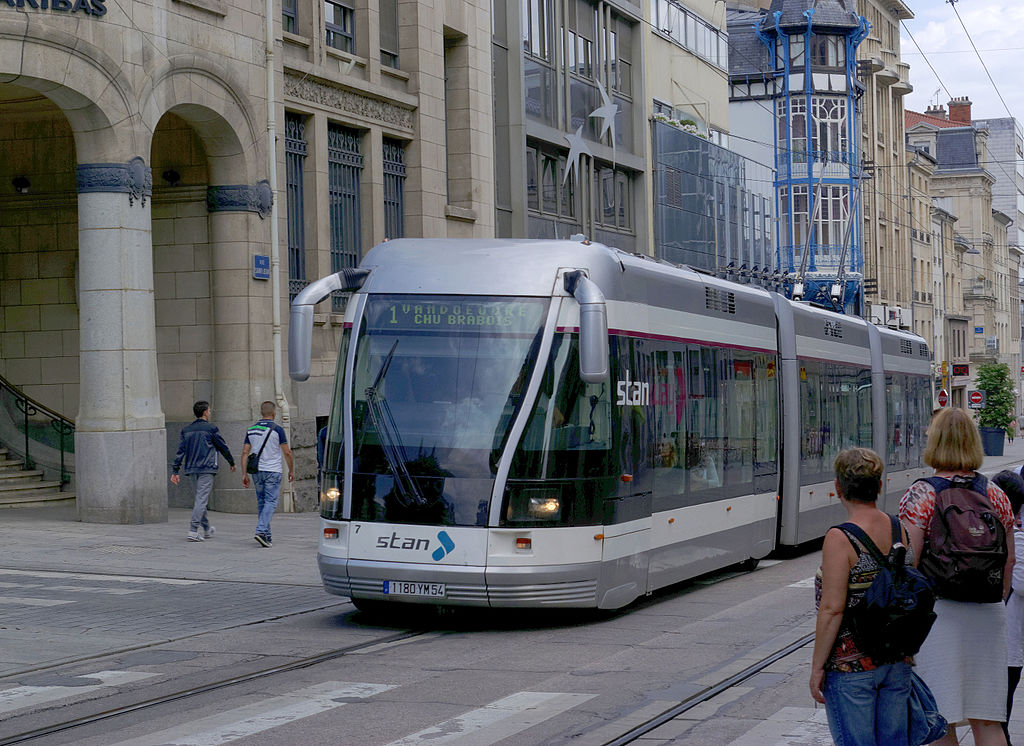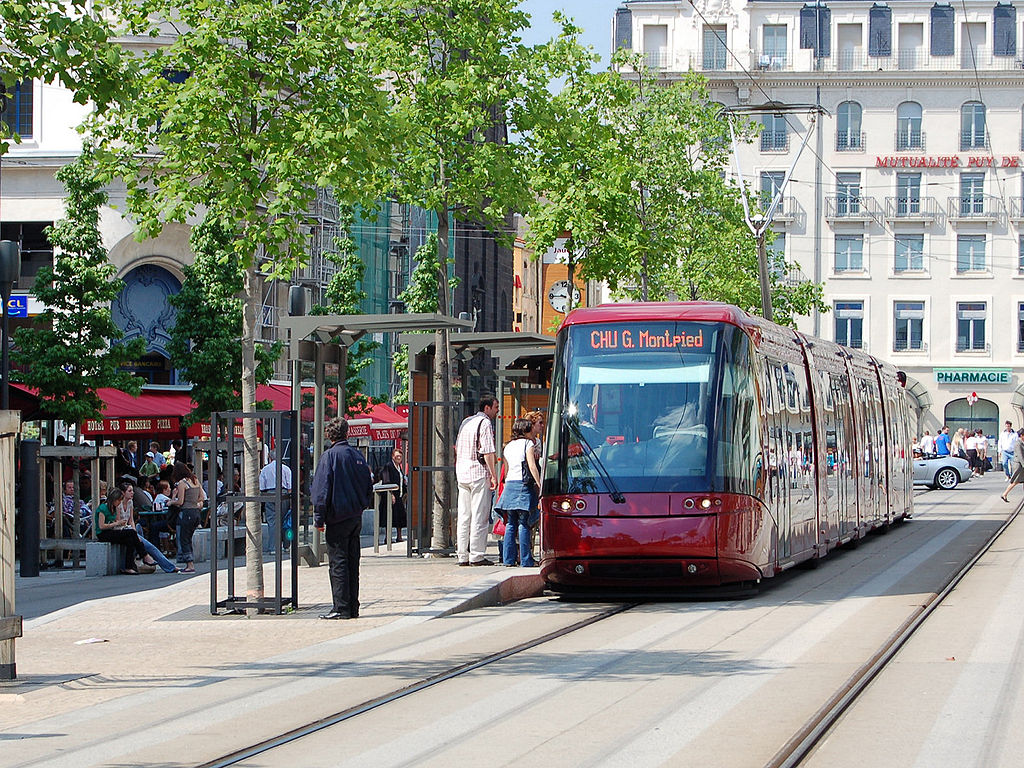Of late, you may have heard murmerings about whether Wellington should have “Trackless Trams” or “Light Rail”. This is a complex subject and certainly one in which none of us – none at all – are qualified to talk about, let alone make a decision on. Luckily, this is not a decision which needs to be made just yet, although soon would be a good idea.
But just in case – Justin case – i think that people should read this news item out of the latest issue I have of Trams and Urban Tramways, a magazine of which I confess I have a strong interest in sporadic buying (certainly makes a step up from Tunnels and Tunnelling Monthly which I used to read, and yes, you will notice that people into Public Transport are passionate about their subject. Well, most forms of Public Transport. There is, as far as I know, no magazine called Buses and Bendy Buses, nor a volume of Trackless Trams across the world. That’s either because no one is interested in reading about them, or because they don’t exist).
But in TAUT (do keep up: Trams and Urban Tramways) there has never yet been any information about the so-called “Trackless Trams” being touted by various people to the Council. Until now that is. In the latest issue of TAUT there is a small article:

Is Translohr’s future in doubt?
“Reports emerged in the French media in November that Alstom is to suspend production of the Translohr ‘tram’ system in 2019. Alstom acquired the rights to the guided bus technology in 2012 in order to fulfil a French Government wish for the technology to be demonstrated in Paris at a time when Lohr Industrie was in financial difficulty, but the rubber-tyred system has struggled to find orders. It has been installed in Clermont-Ferrand, Paris, Padova, Venezia-Metre, Shanghai, Tianjin and Medellin. Padua is reportedly trying to acquire 4-6 vehicles that are still available from the factory, while an agreement is under negotiation between operators which would guarantee spares until 2040.”

So I just thought I would check up on what exactly Translohr does, and so went to Wikipedia, where I found this choice little snippet about Translohr, under a heading Criticism:
“The Translohr system is more expensive than conventional trams or light rail systems, with higher building and operating costs.[citation needed] The 14 km (8.7 mi) Châtillon–Viroflay Line in Paris cost €27.4m per km, including infrastructure, improvements of the right-of-way, and the purchase of 28 STE6 vehicles.[4] In addition, due to the tyres constantly running over the same area of road, there is significant erosion of the roadway; this has already happened with Bombardier Guided Light Transit transit system, resulting in extensive repairs at significant cost to the operator. This adds to already high running costs. Ride quality is also said to be poor and is not much of an improvement over a standard bus[5] due to the four-wheeled design, whereas trams have trucks (bogies) with shock absorbers or springs.[citation needed]
The Translohr system has also suffered some derailments. The Tianjin system suffered a derailment on 20 August 2007, three months after its inauguration.[6] There were five derailments on Padua‘s new installation in 2007 before its inauguration,[7] and one on 22 April 2010[8] due to a misaligned switch.[9]
Critics of the system also point out that, unlike a conventional tramway, Translohr is a proprietary system, meaning that once it is installed, a city would face difficulties in buying vehicles from any manufacturer other than Lohr Industrie.[7][10] A standard tramway, on the other hand, can easily accommodate vehicles from multiple suppliers; Strasbourg, for example, chose the Citadis tram from Alstom in 2005 to supplement its existing Bombardier Eurotram fleet.”
Translohr is not the only trackless tram system of course – there is another, made by Bombardier:
Guided Light Transit (GLT, French: Transport sur Voie Réservée or TVR) is the name of guided bus technology and associated infrastructure designed and manufactured by Bombardier Transportation. It has been installed in two French cities: Nancy and Caen. As of 2018, only the Nancy system is in operation; the Caen system has been abandoned and will be rebuilt as a conventional tramway by 2019.[1]
Both of the systems in these cities are referred to as “tramways on tyres“, and in common with tram systems they use a surface guidance system and in normal operation are powered by electricity drawn from an overhead wire. However, while the vehicles are guided by a central guidance rail, they ride on rubber tyres, not on rails.

There are also likely to be systems from other manufacturers, probably in China, but what is evident from those two examples above, is that trackless trams are certainly not the “silver bullet” to solving public transport that their supporters claim they are, and indeed, they may just be an expensive waste of time and money. Supporters of trackless tram technology have been over telling our hapless Mayor that trackless trams could be one tenth of the cost of Light Rail – it would seem that this claim is simply total bullshit.
Of the two systems shown, made by Alstom and Bombardier, two of the world’s most experienced and prolific tram-makers, it looks as though both of them have given up making the “trackless tram” and are, in effect, walking away from the technology. Makes you wonder therefore – why would anyone ever bother to go down that route ?




The first I heard of trackless trams was on a right wing blog, which automatically made me suspicious given they’re not usually prone to support public transport. I also thought the cost of the road repairs would become astronomical. You only need to go look at the bus stops on Courtenay place to see how churned up the surface becomes. Then I read that it was Justin’s preferred option. Now I had a visit to the tram museum in Paekakariki over summer and they told me an interesting tale about Wellington’s original trams. Apparently councillors or officers went on a trip to see trams in Europe where 90% of the trams were wide guage and about 2 cities had narrow gauge. Now in their infinite wisdom they thought, “Wellington has narrow windy streets we should get narrow guageâ€. Unfortunately the actual carriage still needed to be the same size as a wide guage tram to accommodate passengers. So now wellington had a system where it was virtually impossible to get parts and replacements for. Probably why we still don’t have trams today as it became to costly to maintain. So I’d be very careful going for any untested or mayoral recommendations for such an important piece or infrastructure.
Hmm, a city which recently had an electric trolley bus network, which was discarded because overhead wiring was too expensive to maintain, is looking to a trolley bus network with bendy trolley buses which use overhead cables (called trackless trams because getting rid of the trolley bus network was stupid). I feel like someone’s taking the piss. Or are we actually going to get a trackless, diesel tram. A diesel double-decker bendy trackless tram/bus/overseas jolly for the council!
Perhaps the Council study group should check out North Haverbrook.
Yes – undoubtedly, the Council is being given all sorts of advice at present, both foreign and domestic. On the home front we have people like Brent Efford, who has spent his life-time studying this sort of thing, and he is convinced he is right. A recent quote from him re the LGWM possible proposals:
“Light Rail Transit Association New Zealand advocate Brent Efford said that would be completely ineffective.
“If this was ever built, as this was suggested, it would be one of the worst light rail systems in the world.”
The planned route would miss out the ‘Golden Mile’, which includes Lambton Quay.
Efford said it “totally violates all the common sense principles”, particularly because it misses out the “Golden Mile” — the main shopping district of Lambton Quay, Willis St and Courtenay Place. He said it was disappointing the group has failed to come up with any concrete and sensible plans.
“They’ve had plenty of time to come to a lot more coherent detail. The fact they’ve only got to that stage is just bizarre.”
Totally unhelpful Brent – we need to work together, not snipe at the sidelines, cos all that does is push the ‘authorities’ off to the likes of the “trackless tram” pushers.
On the other hand, you have a group called FIT Wellington, which is advocating a LR route down the Harbour Quays, which is the thing that Efford is dead against. FIT involves a group of people who also know what they are talking about, and they have devised s scheme / route called Scenario A+ of which you can read more about here: https://fitwellington.org
Presently people from FIT are arguing this over on the Wellington Scoop pages, such as this one:
http://wellington.scoop.co.nz/?p=118564
Its divide and rule from the car lobby, LRT along the quays vs LRT along the golden mile. Or their ‘flexible’ bendy Buses plus four lanes to the planes. Having spent time in Sydney I can honestly say George st is a vast improvement over our golden mile now the cars have been removed but it sure wont be rapid donw there.
On the other hand, if you want to find out more about Trackless Trams and the person who came to Wellington to tout the system, then you could read the paper : Newman, P., Hargroves, K., Davies-Slate, S., Conley, D., Verschuer, M., Mouritz, M. and Yangka, D. (2019) The Trackless Tram: Is It the Transit and City Shaping Catalyst We Have Been Waiting for? Journal of Transportation Technologies, 9, 31-55.
https://www.scirp.org/journal/PaperInformation.aspx?PaperID=89661
Marie Verschuer was the person who spoke to the WCC / GWRC – while some of the authors of the paper are from Curtin University, it seems that Verscheur is from something called the Bodhi Alliance. https://www.bodhialliance.com.au
I can’t get anywhere with that address – something dodgy with the website?
Interesting, Guy, thank you. So – the Chinese have indeed been busy, with a trackless tram with rubber wheels, much like a big bendy bus, working in China. In fact – let’s be honest – it is indeed a bus, except that the wheels are on bogies rather than on a transaxle. CRRC is the largest train maker in the world, of course, being a conglomeration of all the Chinese manufacturers, and so despite the Europeans having been at this game (rail) for years, the Chinese company say that they are beating them at their own game. Leaping into a new technology is just as foolish an idea as not elating into technology at all, but Lester has been quoted recently:
https://www.stuff.co.nz/national/113083984/mayor-justin-lester-favours-trackless-trams-over-light-rail-for-lets-get-wellington-moving
“Justin Lester doesn’t want Wellington to be the last city in the world to build light rail. If he gets his way, Wellington will be the first New Zealand city to get trackless trams instead. At a Wellington Chamber of Commerce breakfast to discuss Let’s Get Wellington Moving (LGWM) on Wednesday morning, Justin Lester extolled the virtues of trackless tram technology to create a cheaper, wider-reaching public transport network than would be possible with light rail.
“Personally I’m in favour of a trackless tram,” Lester said.
“We don’t want to be the last city in the world to invest in light rail.”
A trackless tram network could be built in three years and stretch out to Karori, Lester said.
“We don’t have to have this massive investment in infrastructure, we don’t have to put down rails.”
Tim Brown, chairman of Wellington Airport, said “four lanes to the planes” would be “more immediate solution to a more immediate problem”.
“Trackless trams run on rubber wheels carry a similar number of passengers to light rail, but operate using sensors rather than railway lines. In overseas examples lines are painted on roads and trams use cameras to follow them the same way a train follows tracks. Lester said he’d withdraw support for trackless trams if the business case didn’t support it.”
Capital costs for all the types of systems can be low or high depending on the amount of works done to streets.
TVR journeys in Nancy and Caen a decade ago seemed similar to Wellington trolleys to me, but the capital costs were high due to rebuild of streets and every service on and under the surface including footpaths/sidewalks.
Steve – you’re absolutely right about that – and that’s also where so much of the confusion is creeping in. Obviously, the installation of steel tracks on a bed of concrete sleepers is going to involve a lot of digging up of the road. But less obviously, the rubber wheels caused by buses and “trackless trams” (let’s be honest: they’re just bendy buses) also cause massive damage to the roadway and so the roads need to be dug up and built specifically for them.
In fact, I’d hazard a guess that installing a solid concrete bed is probably much more expensive than steel tracks. A concrete bed requires careful stitching together of steel reinforcing and then placement of concrete. Steel tracks can come pre-mounted to the sleepers and installed en masse.
But either way, the REALLY expensive part is the moving of services that NEEDS to happen before either system is installed. Every single line of services running longitudinally beneath the path of a roadway absolutely has to be moved out of the way, without exception. Any services running perpendicularly across the path of the roadway needs to be rationalised to a minimum, as well as positioned low enough down so that it is not an issue. That’s where all the big costs sit.